6 Rules for Onboarding Users to Your Health App
User onboarding is an incredibly important step in the user journey of any app.
The first impression of your product will often determine whether people will stick with it or use it once and never return. When searching for solutions, people typically download a few similar apps, try all of them and stick to the one that suits them best. That means you have only one chance to earn their trust.
With that in mind, the purpose of app onboarding is to prove that your product can deliver expected value as soon as possible and with as few roadblocks as possible.
Additionally, users of health and wellbeing apps are likely to come with a dose of scepticism – is this product a reputable source of health information? Proving you are a credible and trustworthy business will help you gain people’s trust from the beginning.
To recap, to successfully onboard users to health and wellbeing apps:
- Keep it short and streamlined
- Prove you can solve their problem
- Prove you are a trustworthy and credible source of information
Based on my independent user testing of health apps, the following UX tactics will help you streamline your onboarding process and gain user trust from the beginning.
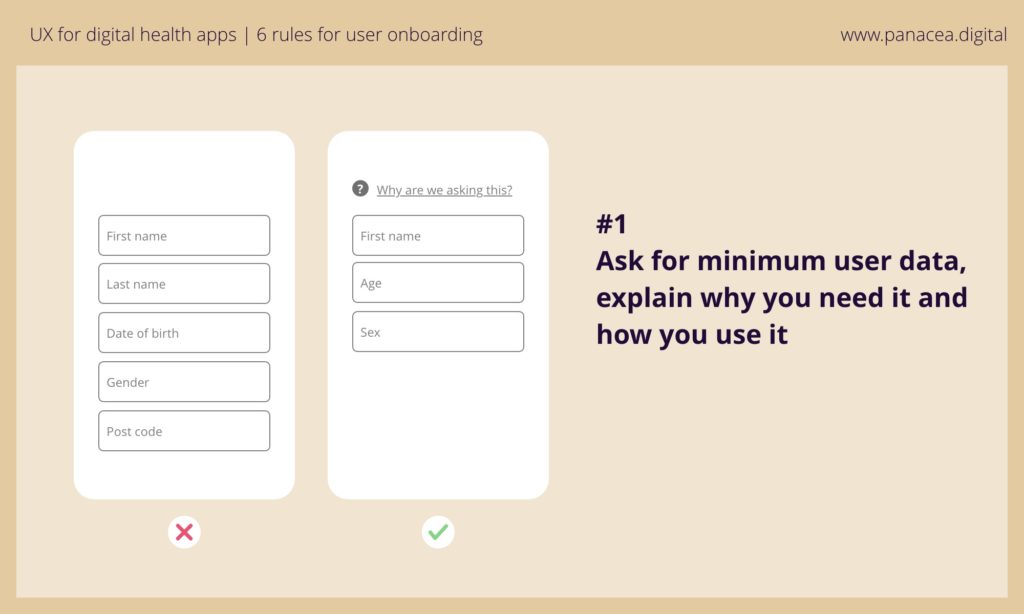
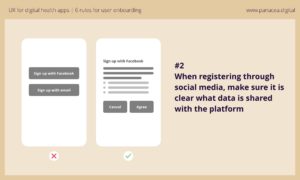
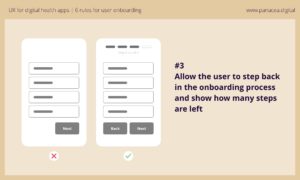
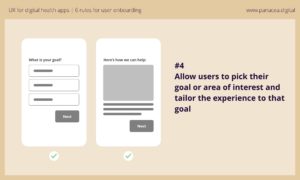
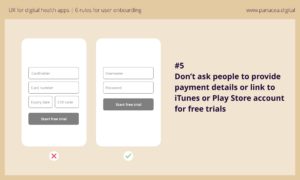
The following rule will help you establish the ongoing use. After the first-time interaction, the home screen is what users will see every time they log into your app. Keep it simple and design around the key interaction to prompt the user in the right direction.
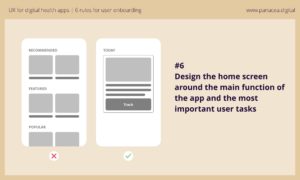
What’s next?
Learn more about designing user-friendly health and wellbeing applications from ‘User Experience for Digital Health Apps’ research report.

